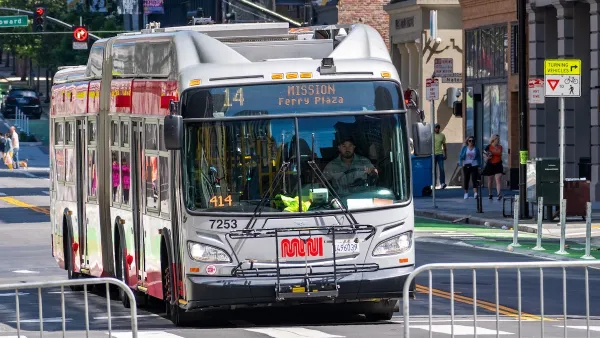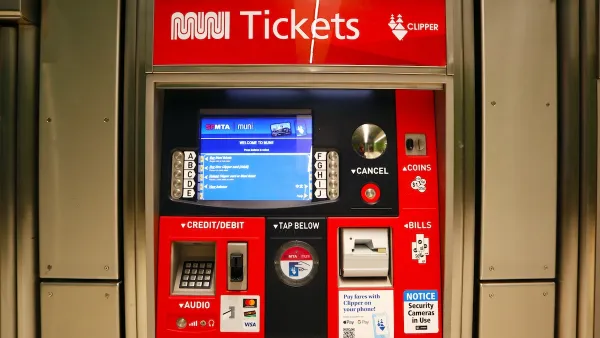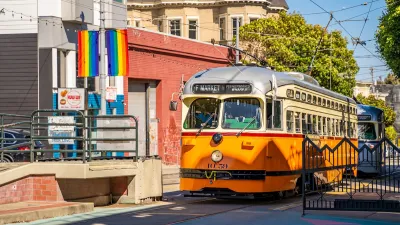Well ahead of it's time, San Francisco adopted a 'transit-first policy' in 1973. However, the 'drive-alone' mode dominates at 39%. While far better than elsewhere in the Bay Area and much of the U.S., transit remains clearly in second place at 32%.
Throughout the Bay Area, residents will point to San Francisco as a city you can get by without owning a car - but while the low modeshare for 'drive-alone' to work is impressive, it still beats transit. And the progress in the last decade has been minimal.
"The goal of The City's transit-first policy was to make Muni a convenient alternative to automobiles. But that hasn't happened. Muni posted a 73 percent on-time performance rate for the 2011 fiscal year, the agency's lowest mark since 2008 and well below the voter-mandated goal of 85 percent."
"Most people like the transit-first policy in theory," said Ed Reiskin, executive director of the San Francisco Municipal Transportation Agency, which operates Muni. "But when it comes to losing their own parking space or a traffic lane that they use a lot, they become less of a fan."
A comparison of how residents travel each day to work - note that the first % is for 2000 and the next for 2009 - go to article itself to see it formatted more clearly.
2000 2009
Drive alone 40.5% 38.9%
Carpool 10.8% 7.4%
Public transit 31.1% 31.8%
Taxi, motorcycle, 1.6% 1.8%
Bike 2.1% 3.0%
Walk 9.4% 10.3%
Work at home 4.6% 6.8%
Source: SFMTA 2010 Transportation Fact Sheet
Thanks to Lowell Grattan
FULL STORY: In transit-first San Francisco, cars still rule the road

Planetizen Federal Action Tracker
A weekly monitor of how Trump’s orders and actions are impacting planners and planning in America.

Map: Where Senate Republicans Want to Sell Your Public Lands
For public land advocates, the Senate Republicans’ proposal to sell millions of acres of public land in the West is “the biggest fight of their careers.”

Restaurant Patios Were a Pandemic Win — Why Were They so Hard to Keep?
Social distancing requirements and changes in travel patterns prompted cities to pilot new uses for street and sidewalk space. Then it got complicated.

Platform Pilsner: Vancouver Transit Agency Releases... a Beer?
TransLink will receive a portion of every sale of the four-pack.

Toronto Weighs Cheaper Transit, Parking Hikes for Major Events
Special event rates would take effect during large festivals, sports games and concerts to ‘discourage driving, manage congestion and free up space for transit.”

Berlin to Consider Car-Free Zone Larger Than Manhattan
The area bound by the 22-mile Ringbahn would still allow 12 uses of a private automobile per year per person, and several other exemptions.
Urban Design for Planners 1: Software Tools
This six-course series explores essential urban design concepts using open source software and equips planners with the tools they need to participate fully in the urban design process.
Planning for Universal Design
Learn the tools for implementing Universal Design in planning regulations.
Heyer Gruel & Associates PA
JM Goldson LLC
Custer County Colorado
City of Camden Redevelopment Agency
City of Astoria
Transportation Research & Education Center (TREC) at Portland State University
Camden Redevelopment Agency
City of Claremont
Municipality of Princeton (NJ)





























